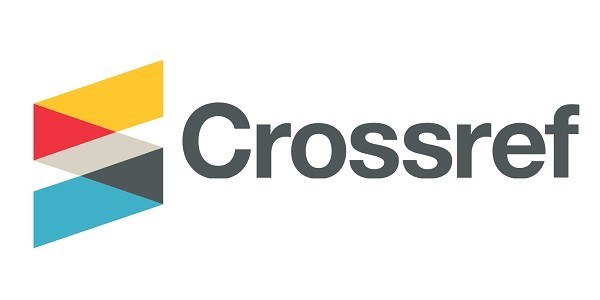Scouse Dialect in English and Tabulahan Dialect in Mamuju Language: A Dialectology Study
DOI:
https://doi.org/10.56326/jlle.v2i1.1451Keywords:
Language Variation, Dialectology, Contrastive Analysis, Tabulahan, ScouseAbstract
This research aims to look at language variations that occur phonologically and lexically in the Scouse dialect or Liverpool English in English and Tabulahan dialect in Mamuju language. Sources of the data for the Tabulahan dialect and Mamuju language were obtained directly from the informants as native speakers of the Tabulahan and Mamuju languages. Meanwhile, the Scouse dialect and English data as a comparison were obtained from previous research conducted by Honeybone (2007) and Baranova (2015). The writer used a qualitative method through a dialectological approach and contrastive analysis. The results of this study show that there are similarities and differences. Phonologically, similarities occur in the features of Vocal Change and Lenition. The difference occurs in the features of the TH-stopping and the category of Rhotic and non-Rhotic which the Tabulahan Dialect does not have this feature but is found in the Scouse Dialect in English. Lexically, both dialects have variations in word classes such as nouns, verbs, adverbs, and adjectives. While the differences occur in other word class variations such as pronouns, prepositions, determinants, conjunctions, numbers and question words which are only found in the Tabuhanan dialect.
References
Baranová, Veronika. (2015). Intelligibility of Lesser-Known Dialects. Brno: Masaryk University.
Budiono, Satwiko. (2015). Variasi Bahasa Di KabupatenBanyuwangi: PenelitianDialektologi. Depok: University of Indonesia.
Davies, Alan. (2005). A Glossary of Applied Linguistics. Edinburgh: Edinburgh University Press Ltd.
Honeybone, Patrick. (2007). New-Dialect Formation in Nineteenth Century Liverpool: A Brief History of Scouse. Edinburgh Research Explorer. (pp. 106-140).
Kartikasari et al. (2018).A Study of Dialectology on Javanese “Ngoko” in Banyuwangi, Surabaya, Magetan, and Solo.Humaniora.30 (2), 128–139.
Kridalaksana, Harimurti. (2008). KamusLinguistik. Jakarta: Gramedia.
Mahmud, Salami and Abdussalam (2014).Gayo Language Is Old Malay (A Dialectology Study: The Language Change). Englisia.1 (2), 191-215
Mahsun.(1995). DialektologiDiakronis. Yogyakarta: Gajah Mada University Press. Pamolango, Valentino Ateng. (2012). GeografiDialek Bahasa Saluan.Parafrase
(02), 7-20.
Parera, Jos.Daniel. (1986). StudiLinguistikUmumdanHistorisBandingan. Jakarta: Erlangga.
Rahayu, IkaMamik. (2013). VariasiDialek Bahasa Jawa di Wilayah KabupatenNgawi: KajianDialektologi. Skriptorium. 1(2), 27-34.
Reniwati et al. (2017). Lexical Variations of Minangkabau Language Within West SumatraandPeninsularMalaysia:ADialectologicalStudy.MalaysianJournal of Society and Space. 13(3),1-10.
Rumalean, Iwan (2020). Lexical Differences in Gorom Language: A Social Dialectology Study. LiNGUA. 15(2), 205-214.
Susiati,S.,&Iye,R.(2020).DialektometriSegitiga:HubunganKekerabatanBahasa Di Sulawesi Tenggara (Bahasa Wakatobi, Bahasa Cia-Cia, Bahasa Pancana, Bahasa Kioko, Bahasa Tolaki). OSFPreprints.
Swphonetics. (2013). Rhoticity in Lancashire: Liverpool – Manchester. Retrieved from https://swphonetics.com/2013/05/08/rhoticitylancslivman/. *Accessed date: September 22nd, 2021*
Trudgill, Peter. (2003). A Glossary of Sociolinguistics. Oxford: Oxford University Press.
Toha, Muhammad. (2013). Isolek-Isolek di Kabaten Aceh TamiangProvinsi Aceh: KajianDialektologi. Madah4(1), 58-69.
Wicaksana et al. (2017). The Phonological and Lexical Variation of Lemukih and Galungan Dialect Viewed from Age Differences: An Analysis Of Socio- Dialectology. JurnalPendidikan Bahasa InggrisUndiksha. 5 (2), 14-23.
Wijayanti, Eva Dwi. (2016). VariasiDialek Bahasa Bawean di Wilayah PulauBaweanKabupaten Gresik; KajianDialektologi. Surabaya: Airlangga University
Downloads
Published
How to Cite
Issue
Section
License
Copyright (c) 2022 Arta Desiyana, Sudirman Maca, and Abeng

This work is licensed under a Creative Commons Attribution 4.0 International License.










